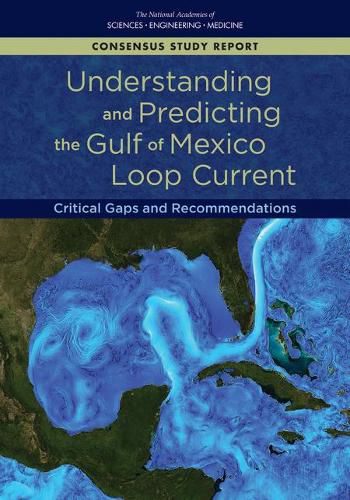Readings Newsletter
Become a Readings Member to make your shopping experience even easier.
Sign in or sign up for free!
You’re not far away from qualifying for FREE standard shipping within Australia
You’ve qualified for FREE standard shipping within Australia
The cart is loading…






One of the most significant, energetic, yet not well understood, oceanographic features in the Americas is the Gulf of Mexico Loop Current System (LCS), consisting of the Loop Current (LC) and the Loop Current Eddies (LCEs) it sheds. Understanding the dynamics of the LCS is fundamental to understanding the Gulf of Mexico’s full oceanographic system, and vice versa. Hurricane intensity, offshore safety, harmful algal blooms, oil spill response, the entire Gulf food chain, shallow water nutrient supply, the fishing industry, tourism, and the Gulf Coast economy are all affected by the position, strength, and structure of the LC and associated eddies.
This report recommends a strategy for addressing the key gaps in general understanding of LCS processes, in order to instigate a significant improvement in predicting LC/LCE position, evolving structure, extent, and speed, which will increase overall understanding of Gulf of Mexico circulation and to promote safe oil and gas operations and disaster response in the Gulf of Mexico. This strategy includes advice on how to design a long-term observational campaign and complementary data assimilation and numerical modeling efforts.
$9.00 standard shipping within Australia
FREE standard shipping within Australia for orders over $100.00
Express & International shipping calculated at checkout
One of the most significant, energetic, yet not well understood, oceanographic features in the Americas is the Gulf of Mexico Loop Current System (LCS), consisting of the Loop Current (LC) and the Loop Current Eddies (LCEs) it sheds. Understanding the dynamics of the LCS is fundamental to understanding the Gulf of Mexico’s full oceanographic system, and vice versa. Hurricane intensity, offshore safety, harmful algal blooms, oil spill response, the entire Gulf food chain, shallow water nutrient supply, the fishing industry, tourism, and the Gulf Coast economy are all affected by the position, strength, and structure of the LC and associated eddies.
This report recommends a strategy for addressing the key gaps in general understanding of LCS processes, in order to instigate a significant improvement in predicting LC/LCE position, evolving structure, extent, and speed, which will increase overall understanding of Gulf of Mexico circulation and to promote safe oil and gas operations and disaster response in the Gulf of Mexico. This strategy includes advice on how to design a long-term observational campaign and complementary data assimilation and numerical modeling efforts.